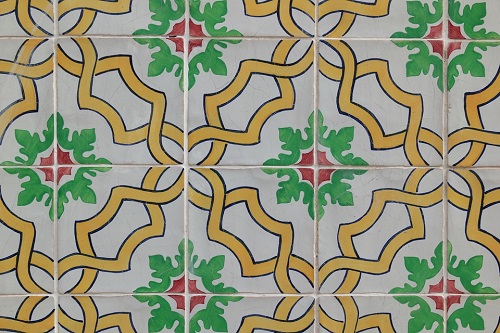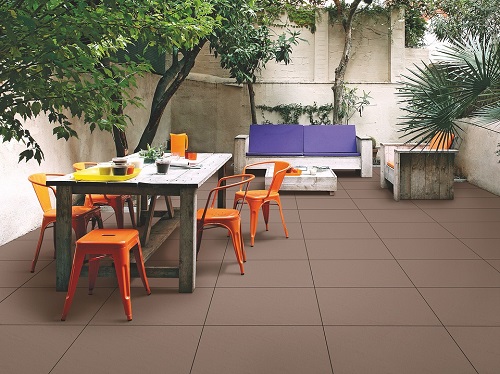Difference between Ceramic Tiles and Vitrified Tiles
Tiles form an integral part of interior and exterior designs of many homes. Among them, ceramics are the most preferred and these are categorized into natural ceramic and vitrified tiles. The vitrified tiles look more like ceramic, but are more processed to look glossy and less porous. It can be confusing to choose between the ceramic and vitrified if you do not know the key differences hence this article was compiled to highlight these differences.
Definition of Ceramic Tiles
Ceramic tiles have a natural look and are often characterized by a rough appearance. Only natural clay mixed with water was used to make the ceramic tiles. The bad side of ceramic tile is that it is porous and absorbs more water; that’s why it is not advisable to use it in areas exposed to too much of water. But, glazing can improve the water resistance and make the tile stronger. Some tiles are not glazed.
When making ceramic tiles, they are shaped and heated in very high temperatures by mixing clay and water. Other composites can be added to add variants. For instance, ceramic tiles are available in many colors.
Definition of Vitrified Tiles
As in the name, vitrified tiles are made through the process called vitrification, which is aimed at making the tiles stronger. Vitrified tiles look similar to ceramic tiles but are glossy, harder, less absorbent and less porous. These characteristics are attributed to their composition of silica, quartz and feldspar which makes it looks like glass hence these tiles are more beautiful. The composition is made before they are heated in the kiln.
Unlike ceramic tiles, vitrified tiles have a glassy texture because glass components are used in their composition. Clay is also used, but a small percentage than in the ceramic tiles. To make different colors, the dye is mixed with clay before heating them. If you scratch the vitrified tiles, the color will look consistent all over. Because of the process undertaken, vitrified tiles are more durable.
Key Differences between Vitrified Tiles and Ceramic Tiles
Applications of Vitrified vs.Ceramic Tiles
Although these tiles can be used in the same applications, vitrified tiles are regularly used in commercial buildings despite the spillage of water. They have a glassy and glossy appearance. Ceramic tiles, on the other hand, are less used in spillage areas but inside the houses. The difference in use is influenced by their water absorption rate where ceramic absorbs more.
Composition in Vitrified vs. Ceramic Tiles
Vitrified are made of the mixture of clay, silica, feldspar and quartz, whereas the ceramic tiles are made of the mixture of solvent and natural clay. Because vitrified is made of glass components, it will have a glass and smooth texture while ceramic have a rough texture. But glazing can also make ceramic tiles glossy.
Strength of Vitrified vs. Ceramic Tiles
Ceramic tiles are less strong than the vitrified tiles. Vitrified are made tougher and scratch resistant. Meanwhile ceramic are made relatively stronger with glazing.
Installation of Vitrified and Ceramic Tiles
Vitrified tiles are harder to install and ceramic tiles are simple to install.
Price of Vitrified vs. Ceramic Tiles
Vitrified tiles are more expensive than the ceramic tiles
| Ceramic tiles | Vitrified tiles |
| Made of earthen clay | Made of silica, quartz and feldspar |
| Less strong | Stronger |
| Glossy if glaze applied | Glossy, glassy and smoother |
| More water absorbent | Less absorbent |
| Porous | Less porous |
| Less resistant to stains | More resistant to stains |
| Less scratch resistant | More scratch resistant |
Summary of Vitrified and Ceramic Tiles
- Ceramic tiles are made of the earthen clay
- Vitrified tiles are made of clay, silica, quartz and feldspar
- Ceramic tiles are glazed to have a glossy texture because are naturally rough
- Vitrified tiles are made of glass components so they look smoother, glossy and glassy
- Ceramic are more solvent absorbent, less stain resistant
- Vitrified tiles are less solvent absorbent and more strain resistant
- Ceramic tiles are often applied in areas less frequented by water or any spillage
- Vitrified tiles can be used in any area because they are less absorbent
- Ceramic tiles are less expensive and easy to install
- Vitrified tiles, on the other hand, are more expensive and not easy to install
- Difference Between CBD and Indica - April 22, 2019
- Difference Between Unilateral Contract and Bilateral Contract - February 8, 2019
- Difference Between Polki and Kundan - December 15, 2018
Search DifferenceBetween.net :
Leave a Response
References :
[0]M (2013). Engineering Ceramics. Springer Science Media
[1]Varghese P.C (2015). Building Materials. PHI Learning Pvt. Ltd.
[2]"Image Credit: http://maxpixel.freegreatpicture.com/Ceramic-Tiles-Portugal-Regular-Wall-Covering-1881890"
[3]"Image Credit: http://maxpixel.freegreatpicture.com/600x600mm-Vitrifiedtiles-Tiles-600x1200mm-India-1478500"


